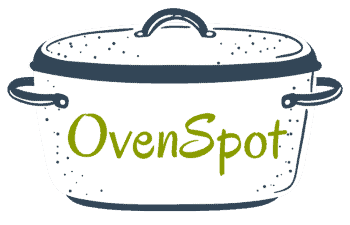What Is Cast Iron Cookware and Why Is It So Popular?
Have you ever wondered what cast iron cookware is? You may have heard more about this type of cookware over the last few years. Part of this would be because statics are finally coming in on the effects of your health when using products that are covered in non-stick products such as Teflon.
Seasoned or enamel cast iron cookware has been cast from iron. Iron will withstand high temperatures, and is rugged and durable. Bare seasoned cast iron can be used on campfires and in the kitchen. When using enamel-coated iron campfires should be avoided. Both deliver the same delicious food – the heat source is the caveat.

This post may contain affiliate links. Please read our disclaimer.
Cast Iron – Manufacture – Materials – Cost
How is cast iron cookware made? What is cast iron made of, and why are cast iron pieces expensive?
Manufacturing Process
Iron casters make the cookware pieces by mixing melted iron and steel blocks together. The molten mixture is then poured into a sand mold.
These skills have been refined over hundreds of years and take place in a manufacturing plant. On cooling, they release the cookware by breaking the mold.
Materials
The cookware is made from iron, and the manufacturer adds chemicals to the cookware mixture to raise the carbon levels to produce the perfect iron mixture.
Read more about the materials used to make cast iron cookware.
Cost
Cast iron cookware became the stable kitchen equipment in homes worldwide. Some people still wonder why cast iron products can be expensive.
The price of a cookware piece can be directly correlated with the quality of the products used to make the iron mixture. As well as the manufacturing process itself.
Factories that mass produce products using lesser quality products will provide an inferior, cheaper end product.
Manufacturers such as Le Creuset use high-quality materials and, to this day, hand-finished each piece of cast iron cookware before it is packed for shipping.
This an excellent resource for an in-depth explanation of why cast iron cookware can be expensive.
Historical Background of Cast Iron Cookware
After China, in the 16th Century, casting techniques were widespread in Europe. Abraham Darby, in 1707, patented the method of sand casting, a technique quite similar to the casting iron technique used today.
Cast-iron cookware saw a boom in the 18th and 19th centuries. In his book, Adam Smith writes, ‘The Wealth of Nations,’ cast iron cookware was worth more than gold.
However, the 20th Century saw a decline in cast iron cookware as aluminum gained popularity among the masses.
Cast Iron Cookware’s Timely Return
Recently, cast iron has made a massive comeback in kitchens of homes and restaurants alike.
Not only is seasoned cast-iron cookware widely available to us, but we now have gorgeous enameled cast-iron cookware within easy reach.
All the benefits of using cast iron for cooking add the versatility to using it in a kitchen as a décor piece to cook and serve all from one pot.
It is fair to say that cast iron gives its stainless steel and aluminum counterparts a run for their money.
Learn more about cast iron cookware made in the USA if you want to support local manufacturers.
Why Is Cast Iron Cookware So Popular?
Read on to find out exactly why people are returning to cast iron cookware:
Unmatched Durability
Cast iron cookware, when taken good care of, will last for hundreds of years! Yes, you can read that again.
Most people will want to invest in cookware that will last a lifetime compared to the modern-day non-stick pots and pans, which you must replace every few years.
With the right care and handling, cast iron cookware will last you much longer than aluminum or non-stick utensils.
Rustic Charm of Cast Iron
Cast iron cookware is trending these days. Many food bloggers and restaurant owners are incorporating cast iron cookware into their mix because the food looks impressive when served in cast iron cookware, and the photographs look stunning.
Have you ever been to a restaurant where the wait staff brings out a hot skillet or pan containing a sizzling dish?
Sometimes, there are even flames involved. What a statement! Talk about an oomph factor while adding a rustic feel to it.
Cast Iron Cookware – Timeless Restorations
Cast iron cookware is experiencing a boom in popularity because of its durability. It is the only cookware that can be restored by stripping it back and revealing bare, unseasoned iron.
Then, through the careful process of re-seasoning, you once again have a piece of naturally non-stick cookware that can appear brand new to the untrained eye…
You can restore cast iron pots and pans and eradicate the rust using the following steps:
- Use a scraper to remove the rust – this could take a while – but keep at it
- Wash it with dish soap, a scourer, and rinse
- Dry your cast iron completely with a cloth
- Place it on the range burner and heat it until it is completely dry
- Coat the inside, outside, handles, and lids of your pans with a thin layer of oil of your choice
- Line your oven with aluminum foil or a large tray to catch the dripping grease. Placing the cookware face down on the top rack of the oven allows excess oil to come off and not leave the iron sticky
- Heat at 350 degrees or more, until the iron smokes – approximately an hour
- Remove the pot, pan, skillet, or Dutch oven from the oven and let cool
- Repeat if necessary
Ta-dah it should look as good as new! It’s now sealed, naturally non-stick, and ready to use.
Of course, this process is really more involved than the steps above if the iron is in a sad and rusty condition.
Have a rust problem? Learn how to remove rust and get that cast iron in the best shape of its life.
Caring For Cast Iron Cookware
When you open the box of your new piece of cast iron cookware, it will be lightly pre-seasoned by the manufacturer. This seasoning is really only enough to protect the iron during storage and shipping of the iron.
Before your first use of seasoned cast iron cookware, even though it says right there on the box that it is ready for use, I would season the cookware before using it. You can see a full tutorial about seasoning new cast iron that I have prepared for you.
You should follow this process to care for your cast iron:
- Cleaning your cast iron well after every use is the key to well-maintained cast iron.
- Scouring and washing by hand, even if the manufacturer says it is dishwasher safe, is always best.
- Drying thoroughly and a light season regularly will negate the need for a full restoration as outlined above.
- Lastly, storing cast iron in the correct manner will also protect the seasoning you have so lovingly applied. The cast iron should be dry, avoid stacking pieces, and keep it free from humidity which is key.
See this article here that explains in depth why and how we should store our precious cookware.
Cookware Safety
The most significant reason why cast iron cookware is gaining popularity again is that there are many health concerns about aluminum and non-stick cookware. When you heat non-stick Teflon-coated pans for long, they emit toxic fumes.
The manufacturers use polytetrafluoroethylene (PTFE) to make the non-stick coating, commonly known as Teflon.
Perfluorooctanoic acid, or PFOA, a chemical found in Teflon, is linked to infertility, low birth weight, testicular cancer, liver disease, chronic kidney disease, and thyroid disorders.
Moreover, due to constant wear and tear, the Teflon coating starts coming off and gets mixed with our food and ends up in our guts, causing cancer.
When food is stored or cooked in aluminum containers, some of the aluminum dissolves and absorbs it.
It results in chronic inflammation of the intestine, hyperacidity, indigestion, peptic ulcers, flatulence, skin pigmentation, dandruff, and eczema, to name a few.
In addition to this, aluminum cookware has been banned in 6 European countries because vegetables cooked in them produce hydroxide poison. It causes colitis and stomach ulcers.
It is prohibited to sell aluminum cooking utensils in Brazil, Hungary, Switzerland, Great Britain, Belgium, France, and Germany.
On the other hand, cast iron cookware is exceptionally safe to use. You can heat it to high temperatures without the risk of side effects.
Types of Cast-Iron Cookware

Lodge Pre-Seasoned 2-in-1 Cast Iron Combo Cooker
Buy Now →(Affiliate)
 Buy Now →
Buy Now → (Affiliate)
 Buy Now →
Buy Now → (Affiliate)

Square Enameled Cast Iron Dutch Oven Baking Pan
Buy Now →(Affiliate)

Le Creuset Enameled Cast Iron Signature Oval Dutch Oven, 6.75 Qt, Marseille
Buy Now →(Affiliate)
See more about the types of cast-iron cookware – including Dutch ovens.
Does enamel cast iron need to be seasoned? You will be surprised at the answer.
Final Thoughts – What Is Cast Iron Cookware?
The Chinese invented cast iron Cookware during the Han Dynasty in 220AD.
However, these days it is gaining popularity among cooks because it is safe to use and does not emit toxic fumes like non-stick cookware.
Cast iron cookware is exceptionally durable, has a rustic charm, and the food cooked in it tastes significantly better.
Cast iron cookware was used hundreds of years ago and will continue to be used in the coming hundreds of years.
So, why are you waiting? Jump on the bandwagon and get yourself a cast iron skillet, pan, or Dutch oven today.
Cruise this site for some awesome recipes using cast iron, including magical Dutch oven bread.
One-Pot Cooking Rocks!
Sources; Wikipedia, Aluminum Cookware, Wiley

Michelle
Hi, I’m Michelle, the founder, owner, author, and editor of OvenSpot. My passion for one-pot cooking commenced when I was working to prepare cafeteria lunches for school students. I am now on a mission to assist you in choosing the cooking pot or appliance you will use daily. As well as in-depth information to assist you in using and caring for your cookware and appliances. Along with the yummy recipes I use at home.
Questions? Reach out to Michelle at [email protected]







